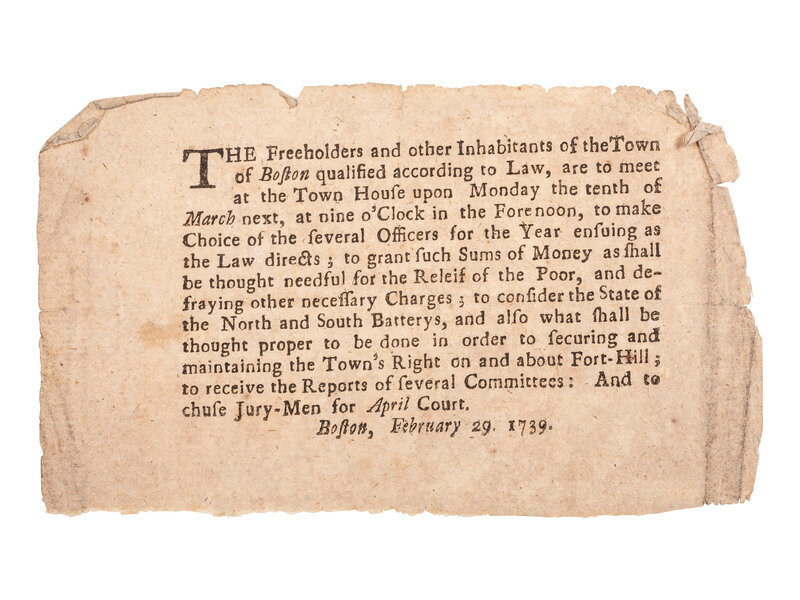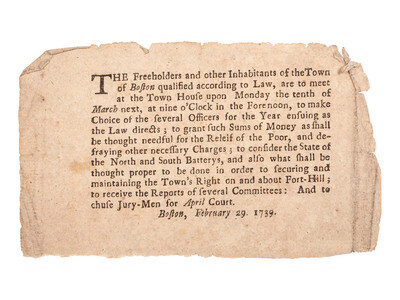Condition Report
Contact Information
Auction Specialist
Lot 302
[COLONIAL]. Printed handbill announcing to "The Freeholders and other Inhabitants of the Town of Boston" the date of an upcoming town meeting and the matters which will be discussed. Boston, 29 February 1739.
Sale 2057 - American Historical Ephemera and Photography
Oct 25, 2024
10:00AM ET
Live / Cincinnati
Own a similar item?
Estimate
$1,000 -
1,500
Price Realized
$635
Sold prices are inclusive of Buyer’s Premium
Lot Description
[COLONIAL]. Printed handbill announcing to "The Freeholders and other Inhabitants of the Town of Boston" the date of an upcoming town meeting and the matters which will be discussed. Boston, 29 February 1739.
1p, 8 1/2 x 14 1/2 cm.
"The Freeholders and other Inhabitants of the Town of Boston qualified according to Law, are to meet at the Town House upon Monday the tenth of March next, at nine o'Clock in the Forenoon...." The notice continues with a list of matters to be discussed at the meeting, including choosing officers for the year as the law directs, granting money for the relief of the poor, receiving the reports of several committees, choosing "Jury-Men" for the court, and considering the "State of the North and South Batterys, and also what shall be thought proper to be done in order to securing and maintaining the Town's Right on and about Fort-Hill."
In the earliest years following Boston's founding, the citizens prepared fortifications to ensure the safety of the town and its inhabitants. In 1646, a shoreline battery was built on "Merry’s Point" at the foot of Copp's Hill. The battery, which became known as "North Battery," provided protection for the mouth of the Charles River and covered the harbor. In 1666, a protective battery called the "Sconce," or the "South Battery," was built at the foot of Fort Hill in the area in Boston now known as Rowes Wharf. The South Battery protected the Town Cove (now solid land).
Boston moved to meet the needs of its poorest citizens early on as well. The town commissioned its first almshouse, a small wood-framed building on the eastern edge of the Common, in 1662. In 1739, perhaps in response to feedback offered at the March 1739 town meeting advertised in this handbill, Boston constructed a two story brick workhouse next to the almshouse in order to discourage the migration of needy strangers to the growing maritime city.
A scarce piece of ephemera, and a wonderful example of town hall democracy at work.



